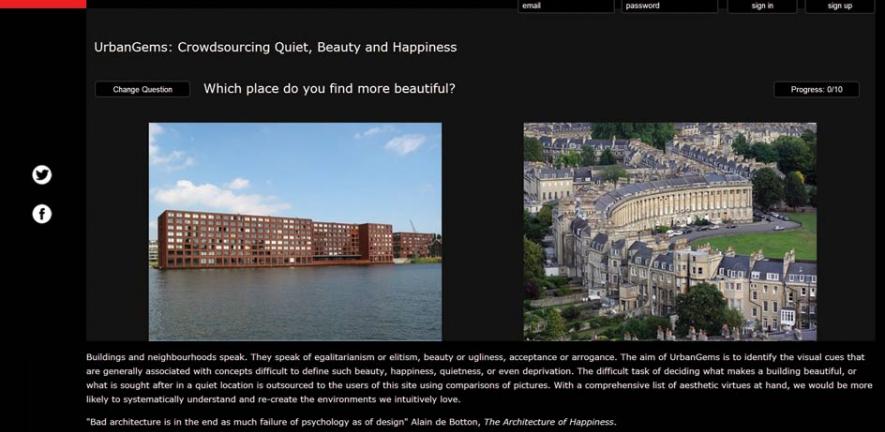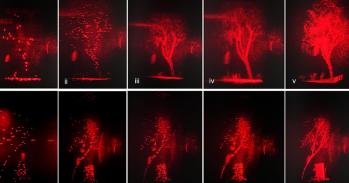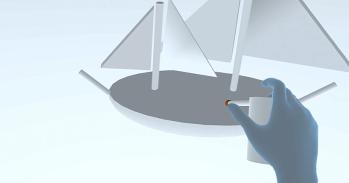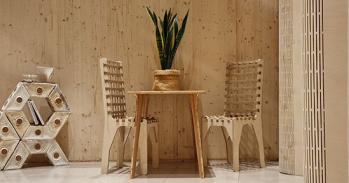
A new online platform will harness crowdsourcing to identify the visual cues that lead people to perceive an urban space as happy, quiet or beautiful - focusing initially on London.
A new online platform will harness crowdsourcing to identify the visual cues that lead people to perceive an urban space as happy, quiet or beautiful - focusing initially on London.
With a comprehensive list of aesthetic virtues at hand, we would be more likely to systematically understand and re-create the environments we intuitively love.
Daniele Quercia
An online platform aims to use digital crowdsourcing to distil people’s positive perceptions of certain London neighbourhoods into the visual and physical aspects that most invoke feelings of happiness or calm - by inviting people to compare a series of pictures and vote on which one is more beautiful, quiet or happy.
Launched today, the site Urbangems.org - developed by researchers from Cambridge’s Computing Laboratory - provides an interactive digital survey to try and quantify the “fuzzy” qualities around happiness so important to people when engaging with their surroundings, particularly in the metropolis where peaceful, happy spaces can feel frustratingly elusive.
The researchers hope to build up a pool of data that will provide not only a useful basis for visually identifying just what it is in urban areas that people perceive to make a space happy or calm, but also a valuable resource for stressed-out Londoners in need of a space to relax and take stock.
Users compare two side-by-side street views from various neighbourhoods around London. They must decide which scene best represents one of three qualities - happy, beauty and quiet. With each selection the user is asked to guess the percentage of other people who shared their view, scoring points for correct guesses which can then be shared through social media.
The site will compile this data to produce a ranking of beautiful, calm and happy spaces from across London. Street maps available on the site will display the locations of that day’s top five spaces in each category.
As each user populates Urbangems.org with responses to pictures, honing the visual cues they feel fit these positive qualities, the site will start to offer personalised recommendations of other spaces in the city based on their choices - in the same way that Amazon provide an ‘if you liked that then try this’ service.
By clicking ‘picture info’, users can add tags and metadata to make their selections more comprehensive, detailing the elements that led to their selection. They can also report any pictures they feel might be misleading.
“Buildings and neighbourhoods can speak of egalitarianism or elitism, beauty or ugliness, acceptance or arrogance. The aim of Urbangems.org is to identify the visual cues that are associated with concepts difficult to define such as beauty, happiness, quietness, or even deprivation,” said Daniele Quercia from the University of Cambridge, lead researcher of the project, who built the platform with developer Adam Barwell from University College London.
“With a comprehensive list of aesthetic virtues at hand, we would be more likely to systematically understand and re-create the environments we intuitively love.”
Initially, the site will work with a baseline of roughly 800 images culled from publicly available digital services such as Google streetview, carefully selected by researchers to be close enough visually to try and negate picture quality influencing user decisions, although researchers admit this may not be entirely possible.
It is hoped by researchers that the public will eventually be able to upload and tag pictures of their own happy spaces, creating an ever-expanding resource that can grow organically and spread across the capital - almost like a dating website that matches Londoners to their most suitable urban oasis.
Underlying the project are important questions about people’s perceptions of the urban spaces around them, and how these can relate to improving areas of social depravity - getting people to invest in the area they live.
“There has been extensive research on the relationship between urban perception and social depravation, such as the famous ‘broken window’ theory put forward in the 80’s suggesting that visual cues of public disorder - like smashed windows - can increase the risk of crime and urban decay because they set a precedent in the area” said Quercia.
“What we want to do is try and drill down to those visual cues that increase people’s sense of well-being in a particular area, to see if we can help build a list of key aesthetic elements that might act in the opposite manner - promoting pleasure and pride in urban environments.”
This work is licensed under a Creative Commons Licence. If you use this content on your site please link back to this page.





